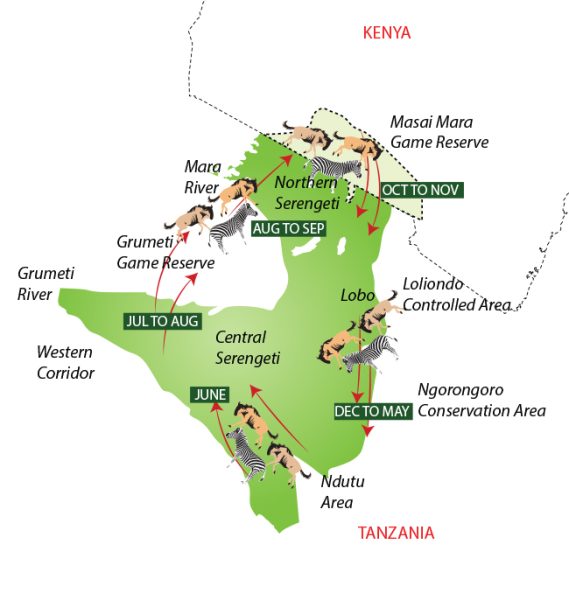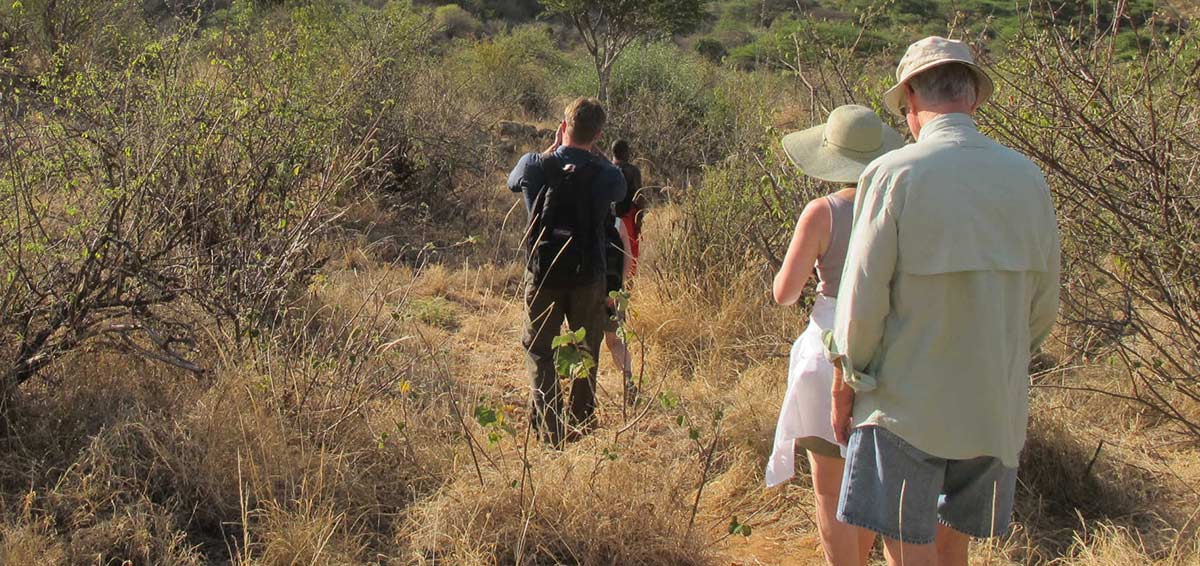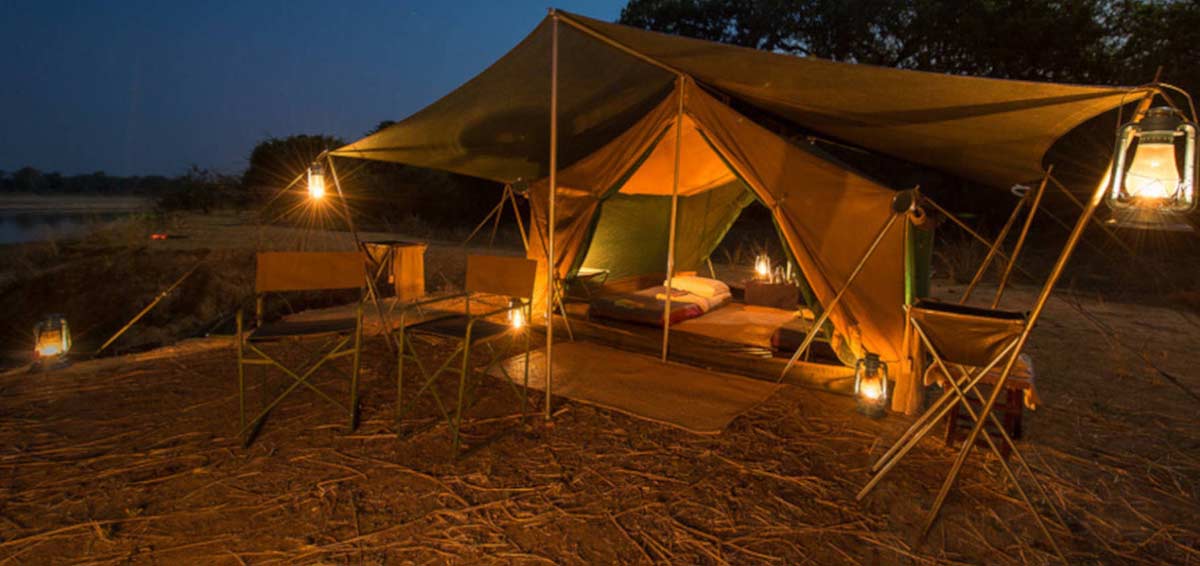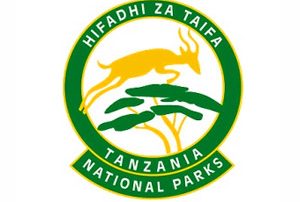Wildbeest Migration, Serengeti Migration
The wildebeest migration is the mystery of life when it comes to this renowned natural event of the world, nothing to compare on Earth. The great migration of Serengeti.
Is the wonder of the world which repeats each year from Serengeti National Park to Maasai Mara in Kenya. Is a natural event that attracts thousands of visitors across the world.
Does wildebeest migrate alone?
The movement does not involve the wildebeest alone. Other animals including Zebra’s antelopes join this great migration.
Is the death and life risk taken by these animals to ensure their future survival? Many lose life but mark the beginning of new life after the migration back to Serengeti.
This annual migration includes two governing states’ ecological zones. Most of the time the migration stays in Serengeti in Tanzania. From July to September, the Mara River crossing takes the course to Maasai Mara in Kenya.
Why wildebeest migrate ?
Despite the deadliest crocodiles, the sharks of the Mara River exist. Nothing stops the ancient instincts of these animals from migrating in search of grass and water.
While seeming like a tragic story for wildebeest, on the other side it’s the feast for the cannibals. Including well-known wildcats like lions, leopards, hyenas, and cheetahs.
The buzzling number of prey invites all creatures living in Serengeti. Birds of all species roam along with this natural event in Tanzania.
The wildebeest migration is unpredictable. There is no fact on when and how this journey started on Earth. There is no beginning or end.
It’s a constant search for food and water for African wildlife. The birthmark is the beginning of this migration. Estimation of one million wildebeest calves is born during six weak period
each year.
When is wildebeest migration?
Between late January and mid-March, thousands lose a life and give life.
The migration takes the animals from the Ngorongoro Conservation Area. Not into the crater itself in the south of the Serengeti.
Up through the Serengeti and across into the Maasai Mara in Kenya and back again.
This journey is beset with all dangers. The young calves are taken away by predators. The river banks break the legs on the steep slopes. The exhausted ones are drawn and fall back to the river.
The great players of the migration include three groups of grazers. These grazers have different grass-eating habits. One group eats the top of the tallest grass. The next group eats medium-height grass until completely eaten and the herds move on.
This means each group sticks to its kind with only a small overlap in their distributions. These grasses have the highest protein and calcium content.
The big question to ask is how the wildebeest knows which way to go. The general belief is that wildebeests have the instinct to weather as they follow the rain and new grass.
Some thoughts are not proven scientific. Believe that animals react to lightning and thunderstorms in the distance. Also, others suggest that wildebeest can locate rain more than 50km away.
Is it possible to do the timing for wildebeest migration?
The common question from different people around the world is how do you ensure to are there when it happens? The long and short of it is that you can’t. The migration is unpredictable.
Though Mara River crossing activity is considered the climax of the migration period. Mara River crossing is an event that will take you through a range of emotions. Anticipation, heartache, inspiration, excitement and so much more
Despite the unpredictable nature. We invite you to go through the recorded calendar for many years. This calendar will give a general idea of the migration in Serengeti and Maasai Mara.
Wildebeest migration calendar in Serengeti

In December, January, February & March
The Serengeti and Ngorongoro are the most impressive wildlife sanctuary in the world.
From December to March, the plains of Serengeti Ngorongoro become home to wildebeest.
The great herds graze on rain-ripened grass. This is the best time to visit the Serengeti.
From late January to mid-March over 80% of wildebeests give birth. The concentration remains on Ndutu and Salei plain (south of Serengeti)
This is the best time to observe the predators like lions and cheetahs. For a better stay, you should focus on staying mobile camp in the Ndutu or Naabi area or Ndutu Safari Lodge.
In April & May
During April and May, the depleted plains are unable to sustain the endless herds.
The migration swept west and north. Moves from the short grass plains of the south Serengeti. to the long grass plains and woodlands of the Serengeti’s Western Corridor. Almost to Lake Victoria.
The long rain starts during this month and marks the beginning of low off-season for game drives. Most trails become impassable.
The recommended lodges and camps during this time are.
Ndutu Safari Lodge Kusini Camp, and the Serengeti Serena Lodge. So are campsites in the Ndutu/Naabi area.
In June By the end of May
The wildebeest have exhausted the Western Corridors. Best pastures and the herds must move further north. Entering the Lamai Wedge and the Mara Triangle. Breeding occurs in May and June.
This is a transitional period between the rain and the dry season. Faru Faru River Lodge, Sasakwa Hill Lodge, Sabora Plains Tented Camp. Grumeti River Camp, Migration Camp, and Kirawira Camp. are the ideal options for viewing the migration. Seronera and Moru area campsites are also best.
In July & August
By July countless herds have amassed along the swollen Mara River. A final barrier from the short sweet grasses of the Masai Mara.
The crossing place they have chosen is shallow allowing the majority of animals to pass. In other areas, the waters boil with drowning wildebeest and slashing crocodiles.
Please note the majority of visitors do not witness the wildebeest crossing. Timing varies each year in years of little rain few wildebeests cross the river into Kenya.
In September The Wildebeest herds are in the northern areas of Tanzania. Serengeti National Park and in Kenya’s Masai Mara Reserve. Wildebeest cross the Mara River daily.
Guests staying at the Governor’s Camps in the Mara and at Migration Camp in the Serengeti. Should have seen hundreds of thousands of wildebeests and zebras daily.
In October
There is a trend of cool mornings and warm days in Kenya’s Masai Mara. The migrating herds of wildebeest and zebra graze the Mara grasses.
The northern and central areas of the Serengeti received some heavy rain showers. And the herds have followed their noses in search of lush, green grass.
The end of October is marked by large river crossings. The wildebeest and zebra leave the Mara on their long trek down south.
The herds now stretch from Lobo from the Tagora plains area to the central Seronera area and down to Naabi Hill.
It is common to receive patches of wet weather in the Serengeti towards the end of the dry season (in October). So the rain maybe this and not an early onset of the short rains.
If this is the case, it will dry out and the wildebeest will head back north until they feel the real rains start.
In November
The arrival of the short rains causes the migration to move southward. During the short rains of November, the wildebeest migration is best viewed from Klein’s Camp. Campsites in the Lobo area are best.
November ends the migration makes its way back to the southern Serengeti. And early in the year they once again give birth. The circle of life is complete.
Serengeti is the winner of many awards as Wonder of the World. “Covering about 10,000 square miles of land that teems with life.
Serengeti is home to the diverse wildlife on Earth. And the start and finish line of the world’s last great migrations.”
Serengeti National Park offers a diversity of accommodations. From lodges, and several both public and special campsites.
Contact our team to discuss your plan for free. You can prefer either special or premium campsites within or outside the park.
You can decide to spend days tracking wildebeest in Serengeti. We have the best offers for you in Serengeti. This trip can be combined with other trips either to Ngorongoro Crater or Zanzibar.
Read more about the Complete Guide for Serengeti


























































